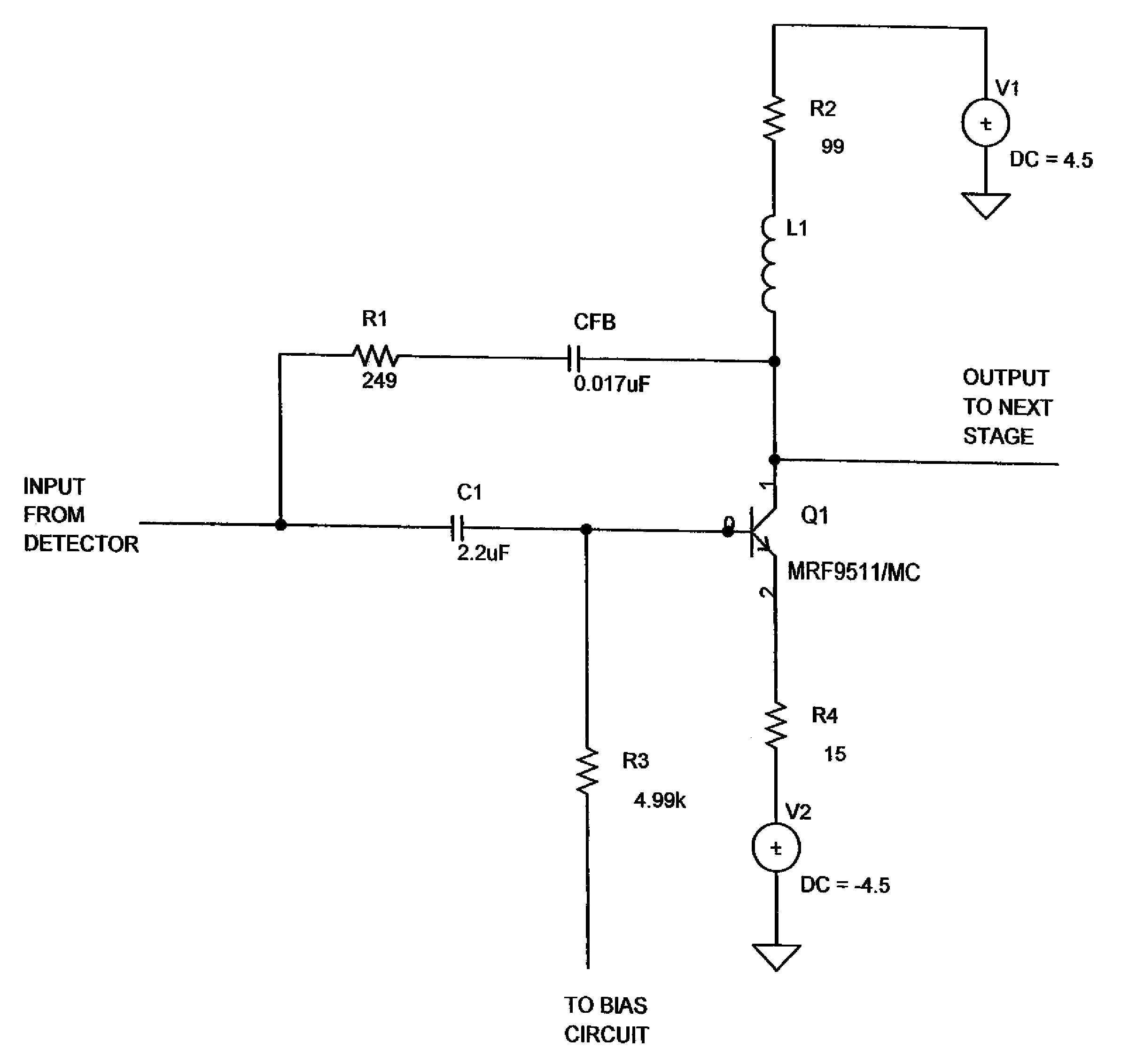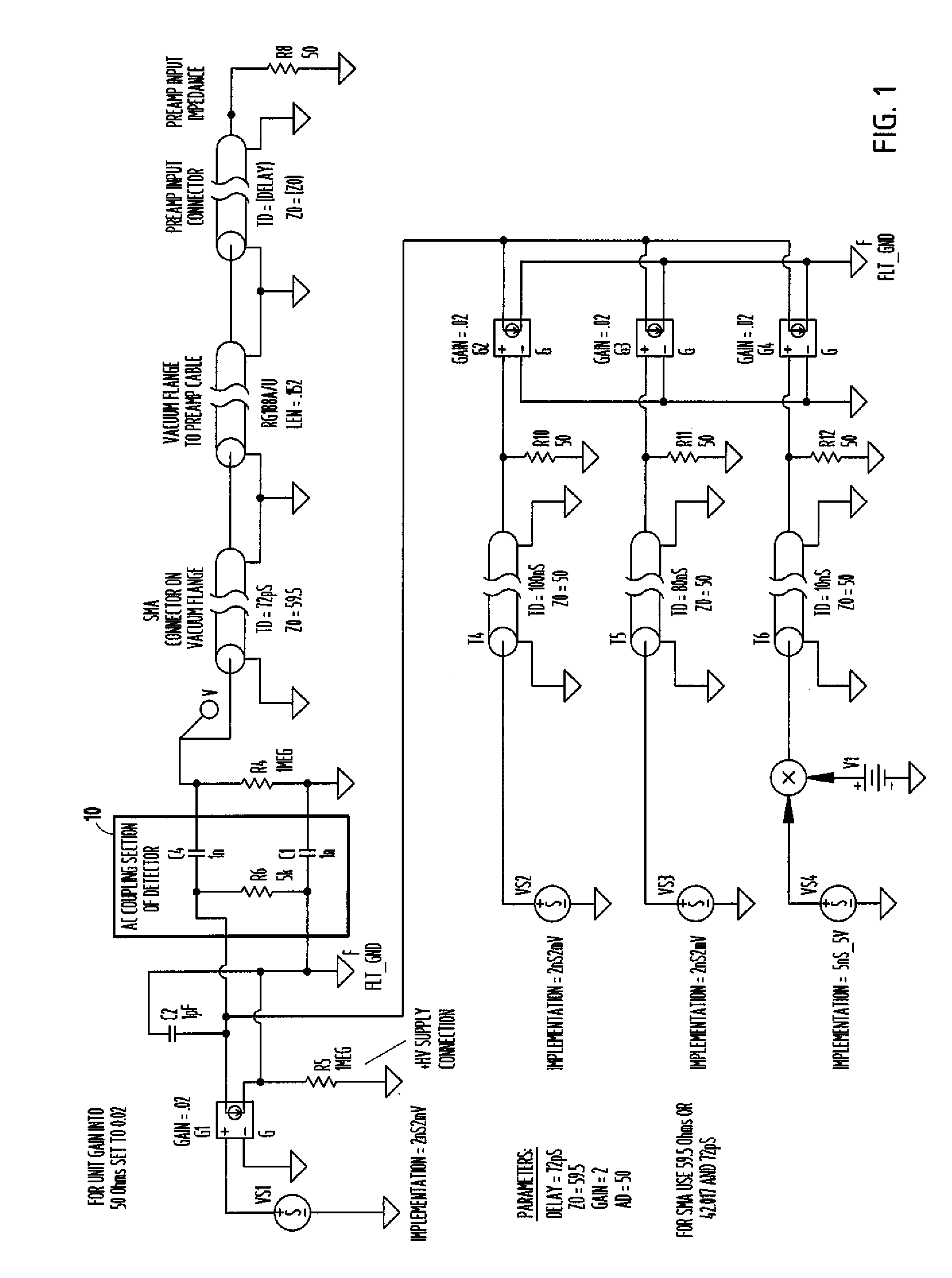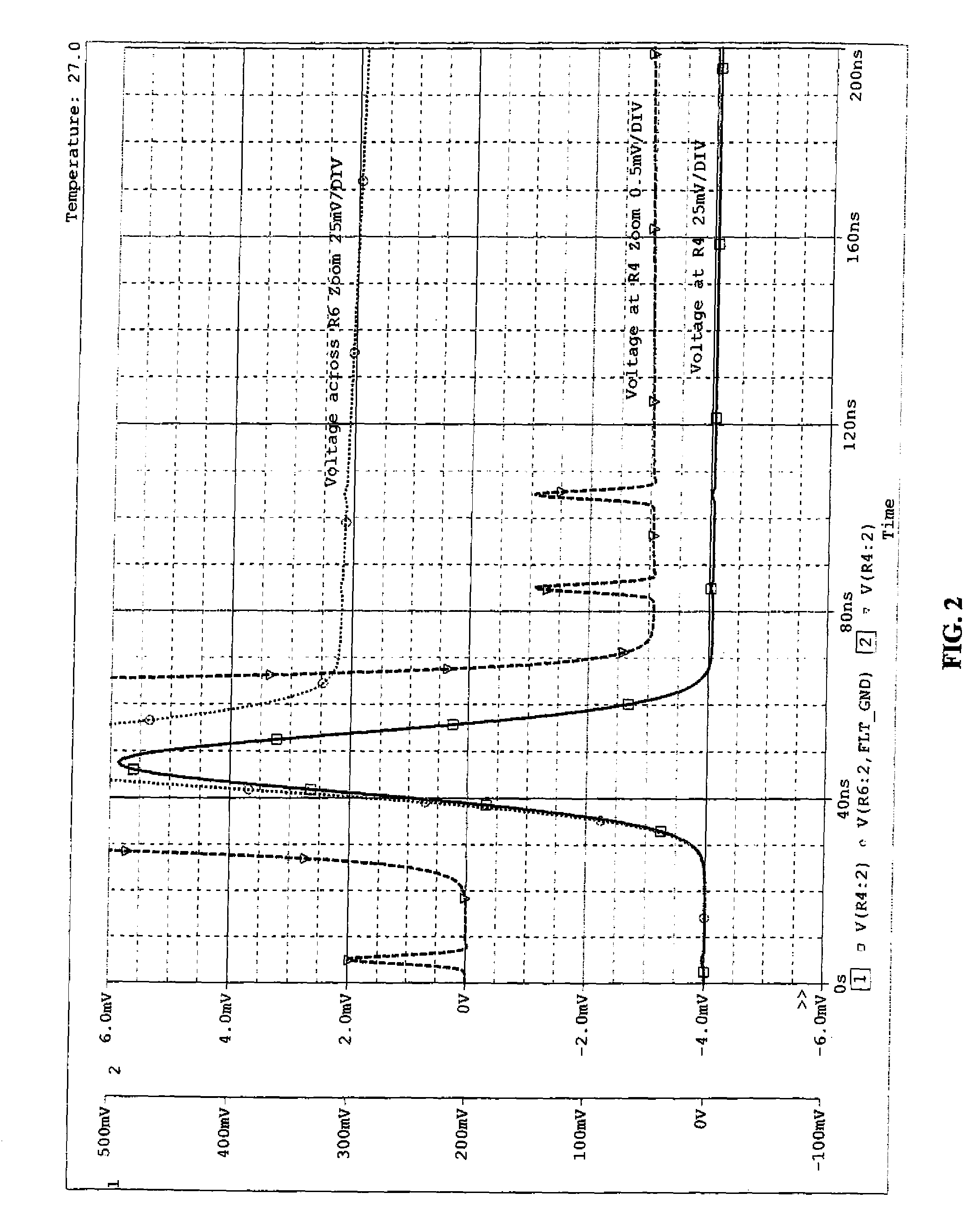Base line restoration circuit
a restoration circuit and base line technology, applied in the direction of low noise amplifiers, particle separator tube details, separation processes, etc., can solve the problems of base line shift dependent, dc coupling of a detector may not be possible, etc., to reduce reduce the noise, cancel or reduce the effect of the detector ac coupling
- Summary
- Abstract
- Description
- Claims
- Application Information
AI Technical Summary
Benefits of technology
Problems solved by technology
Method used
Image
Examples
example 1
Integrate and Inject Compensation Current
[0015]In one embodiment, the circuit of FIG. 4 achieves base line correction by injecting a current equal to that which flows due to the built up charge in the detector's AC coupling network of C1, C4 and R6. When the +HV supply is connected to a stiff supply (which is preferable in most cases), C1 is no longer a factor in the time constant. To mimic the response of R6 and C4, the base line restore circuit 20 of FIG. 4 employs a low pass filter R8 and C5 coupled in shunt with the termination resistance R4, the data systems input impedance. The data system could be the input to an analog to digital (A / D) converter or an amplifier stage. C3 is present to block DC current thus preventing run away of the compensation over time. The value of C3 is chosen to be much greater than C5. R1 provides a DC reference and has a resistance which is much greater than that of R8. The voltage measured on C5 is converted to a current by voltage controlled curren...
example 2
Current Driven Integrator Compensator
[0018]A noise performance improvement to the integrate and inject compensation circuit of FIG. 4 can be made by moving the integration function to after the current source. This allows the noise bandwidth of the circuit to be limited by the integration capacitor. A preferred circuit of this type is illustrated in FIG. 6. In this circuit 30, the compensation circuit is connected to the load termination. Transconductance amplifier U1 creates a current at pin 8 that is proportional to the voltage present at pin 3 divided by the resistance present in the emitter (E) circuit. U1's bias current is controlled by R5 which adjusts the internal emitter resistance. This internal resistance added to R3 represents the resistance seen by the emitter circuit for AC signals. In this case, the total AC emitter resistance is adjusted to be 50 Ohms. The DC emitter resistance is much higher eliminating potential lockup of the circuit due to high DC values. The DC em...
example 3
Low Noise Amplifier Base Line Correction
[0021]The previous circuits can be added to an existing data collection system to remove the effects of base line shift caused by AC detector coupling. However, both circuits increase the total system noise due to the added active components. Some data collection electronics include a low noise amplifier circuit to boost the signal level to a value adequate for further analysis. Typical noise levels for this type of preamplifier are specified in the range of 1.5 nV / Hz^0.5. To achieve these noise levels, discrete transistor designs are typically utilized that employ feedback techniques to create the desired 50 Ohm input impedance. Feedback is used since a termination resistor of 50 Ohms will have a noise level of 0.9 nV / Hz^0.5.
[0022]A typical low noise amplifier 40 (FIG. 7) will consist of a low noise RF transistor Q1 which is feed through a large blocking capacitor C1. Feedback is created by R4 in the emitter circuit and R1 in the collector to...
PUM
 Login to View More
Login to View More Abstract
Description
Claims
Application Information
 Login to View More
Login to View More - R&D
- Intellectual Property
- Life Sciences
- Materials
- Tech Scout
- Unparalleled Data Quality
- Higher Quality Content
- 60% Fewer Hallucinations
Browse by: Latest US Patents, China's latest patents, Technical Efficacy Thesaurus, Application Domain, Technology Topic, Popular Technical Reports.
© 2025 PatSnap. All rights reserved.Legal|Privacy policy|Modern Slavery Act Transparency Statement|Sitemap|About US| Contact US: help@patsnap.com



